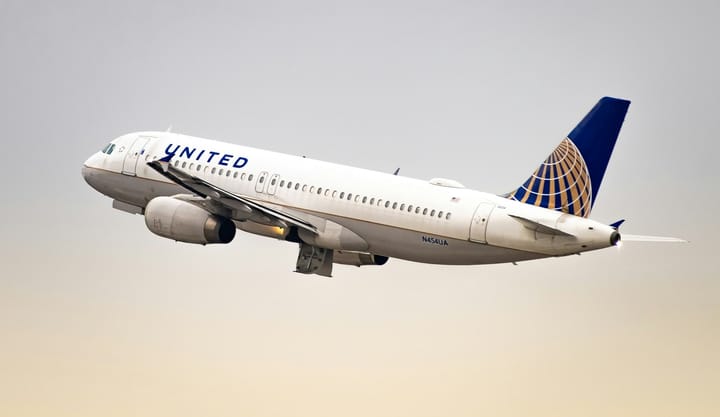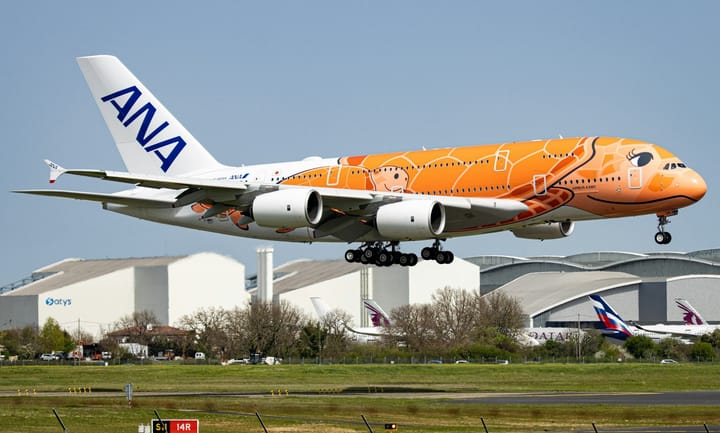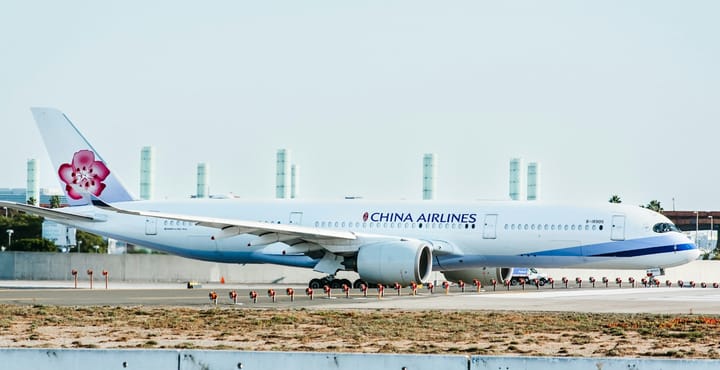A focused analysis of Turkish Airlines’ regional performance, covering passenger flows, cargo logistics, and seat-kilometer efficiency (Load Factor - %), driven by strategic innovations and operational excellence.
1. Total Regional Passengers Carried
Turkish Airlines enhanced its regional connectivity through several strategic moves. In Europe, it partnered with EU authorities in 2022 to streamline Schengen transit visas, improving access to secondary cities like Lyon and Stuttgart. The airline also expanded its codeshare agreements with Lufthansa and Austrian Airlines, facilitating seamless transfers to over 100 European destinations. In the Middle East, it partnered with Saudia in 2023 to operate exclusive pilgrim charters for Hajj and Umrah, while in 2024, it optimized business traffic to Doha by integrating flight schedules with Qatar Airways.
In Africa, Turkish Airlines introduced budget-friendly AnadoluJet flights in 2023 to underserved cities like Bamako (Mali) and Freetown (Sierra Leone), and secured fifth-freedom rights for intra-Africa routes like Nairobi to Dar es Salaam in 2024. On the North American front, it launched a direct connection from Istanbul Airport (IST) to Denver International Airport (DEN) in 2023, using Boeing 787-9s, and introduced the "Flying Chef" service on U.S. routes in 2024. In Central and South America, Turkish Airlines revived flights to Havana José Martí International Airport (HAV) in 2024, and partnered with Copa Airlines for a codeshare agreement in 2023, offering streamlined connections to over 30 Latin American cities.
2. Total Regional Cargo & Mail Handled
Turkish Airlines strengthened its regional cargo and mail handling with several strategic initiatives. In the Middle East, it established a CEIV-certified pharma hub in 2023 with Qatar Airways for temperature-sensitive medical shipments and secured exclusive rights in 2022 to transport infrastructure materials to Baghdad and Erbil. In the Far East, the airline signed global agreements with e-commerce giants Alibaba’s Cainiao in 2022 and Temu in 2023 for dedicated freighter routes to Shanghai and Guangzhou, while also piloting blockchain-based customs clearance for Far East cargo at Istanbul Airport (IST) in 2024.
In Africa, Turkish Airlines dominated perishables transport in 2023 with CEIV Fresh-certified cold chains for Kenyan flowers and vegetables to Europe, while also partnering with the Africa CDC in 2021 to distribute over 50 million COVID-19 vaccines across the continent. In North America, the airline repurposed Boeing 777s for hybrid “preighter” flights from 2020 to 2022 to carry tech equipment on Istanbul Airport (IST) to Chicago O’Hare International Airport (ORD) routes. It also secured long-term contracts in 2023 to transport AI hardware and semiconductors. In Central and South America, Turkish Airlines launched dedicated cargo flights in 2024 for premium Colombian coffee and Ecuadorian cocoa under its “Bean-to-Bar” initiative.
3. Regional Revenue Passenger Kilometers (RPK) Performance
Turkish Airlines made significant moves to boost its Regional Revenue Passenger Kilometers (RPK) across various regions. In Europe, the airline redesigned its Business Class on Airbus A350s in 2023, introducing lie-flat suites and Dolby Atmos sound for a premium experience on transcontinental routes. Meanwhile, in North America, Turkish Airlines enhanced premium service by granting its passengers access to United Polaris lounges in 2023, ensuring seamless connectivity to the U.S.
In the Middle East, Turkish Airlines deployed 240-seat Airbus A321neos in 2023 to maximize RPK during peak Umrah seasons on the Istanbul Airport (IST) to King Abdulaziz International Airport (JED) route. The airline also introduced Premium Economy class in 2024 on high-demand routes like Istanbul Airport (IST) to Narita International Airport (NRT) and Istanbul Airport (IST) to Singapore Changi Airport (SIN), catering to increasing passenger demand. In Africa, Turkish Airlines deployed fuel-efficient A321LRs in 2023 on thinner routes such as Istanbul Airport (IST) to Blaise Diagne International Airport (DSS) in Dakar and Istanbul Airport (IST) to Khartoum International Airport (KRT), optimizing capacity for these markets.
4. Regional Available Seat Kilometers (ASK) Capacity
Turkish Airlines optimized its Regional Available Seat Kilometers (ASK) by upgrading its fleet across various regions. In Europe, the airline replaced aging Airbus A320s with 240-seat A321neos between 2021 and 2024, deploying them on high-demand routes like Istanbul Airport (IST) to Charles de Gaulle Airport (CDG) in Paris. In the Middle East, Turkish Airlines upgraded its Istanbul Airport (IST) to Dubai International Airport (DXB) and Doha Hamad International Airport (DOH) routes in 2023 with fuel-efficient Airbus A350-900s, boosting ASK while reducing operating costs.
In the Far East, the airline took delivery of Airbus A350-1000s in 2024 to increase ASK on ultra-long-haul routes like Istanbul Airport (IST) to Singapore Changi Airport (SIN) and Istanbul Airport (IST) to Incheon International Airport (ICN) in Seoul. In Africa, Turkish Airlines retrofitted Airbus A330-300s in 2023 with 289 seats for high-demand routes such as Istanbul Airport (IST) to Murtala Muhammed International Airport (LOS) in Lagos and Istanbul Airport (IST) to Jomo Kenyatta International Airport (NBO) in Nairobi. On the North American front, the airline increased seasonal ASK in 2023 on routes like Istanbul Airport (IST) to Los Angeles International Airport (LAX) and San Francisco International Airport (SFO) using Boeing 777-300ERs. In Central and South America, Turkish Airlines designated Bogotá El Dorado International Airport (BOG) as a regional hub in 2024, offering connections to Peru, Chile, and Argentina.
Cross-Cutting Strategies
• Diplomatic Air Rights: Secured 5th/7th-freedom rights in Africa (2022–2024) and Latin America (2023).
• Sustainability Leadership: Operated Europe’s first SAF-powered cargo flight (Istanbul-Paris, 2024) and joined Airbus’ hydrogen consortium.
• Digital Innovation: Launched AI-powered “Smart Connect” (2022) for 45-minute transfers and blockchain cargo tracking (2024).
5. Passenger Load Factor (%) Analysis
Turkish Airlines boosted its international load factor through its hub-and-spoke model, with a 45-minute Minimum Connection Time (MCT) and AI-powered “Smart Connect” system, attracting transfer passengers for long-haul flights. Fifth-freedom routes like Istanbul Airport (IST) to Milan Malpensa Airport (MXP) to Nairobi Jomo Kenyatta International Airport (NBO) optimized load factors by capturing local demand. Premium cabin upgrades, including lie-flat suites on Airbus A350s and Boeing 787s, drove premium demand, while the introduction of Premium Economy in 2024 balanced mid-tier demand on Far East and North America routes. Turkish Airlines also won the APEX 2024 Best in Class award for long-haul load factor efficiency.
Turkish Airlines improved its domestic load factor with several key strategies. AnadoluJet optimized flight frequencies using AI tools based on demand signals from its mobile app, like on the Istanbul Airport (IST) to Antalya Airport (AYT) route. High-density cabin layouts on A320neos, with 189 seats, maximized capacity on shuttle routes. Hybrid pricing models, such as "Last-Minute Leisure" fares, filled underbooked flights like Istanbul Airport (IST) to Trabzon Airport (TZX). The dual hub strategy, utilizing both Istanbul Airport (IST) and Sabiha Gökçen Airport (SAW), helped split business and leisure traffic, avoiding congestion and cancellations.
Turkish Airlines achieved impressive regional load factors through strategic capacity management across its regional routes. In Europe, it optimized peak-time departures, such as increasing the frequency of Istanbul Airport (IST) to London Heathrow Airport (LHR) to 7 times daily, aligning with both business and leisure demand. The airline also benefited from Star Alliance synergy, with codeshare integrations with Lufthansa and Swiss International Air Lines filling last-minute seats on secondary routes like Istanbul Airport (IST) to Stuttgart Airport (STR).
In the Middle East, Turkish Airlines deployed high-density Airbus A321neos during Ramadan, ensuring capacity matched the seasonal Umrah pilgrim demand to Jeddah King Abdulaziz International Airport (JED) and Riyadh King Khalid International Airport (RUH). The Qatar Airways partnership with joint loyalty programs also incentivized premium travelers to book connecting flights via Istanbul Airport (IST).
In Africa, the airline focused on underserved routes, using smaller A321LRs for destinations like Istanbul Airport (IST) to Freetown Lungi International Airport (FNA), while AnadoluJet offered budget-friendly fares on regional routes like Nairobi Jomo Kenyatta International Airport (NBO) to Antananarivo Ivato International Airport (TNR). In North America, the “Flying Chef” service and upgraded Business Class helped balance load factors on long-haul routes, and in the Far East, cultural campaigns like “Taste of Türkiye” and K-Pop charters filled off-peak flights. Turkish Airlines also received industry recognition for having the highest European load factor among EU carriers in 2023, attributed to its dynamic pricing algorithms.




Comments ()